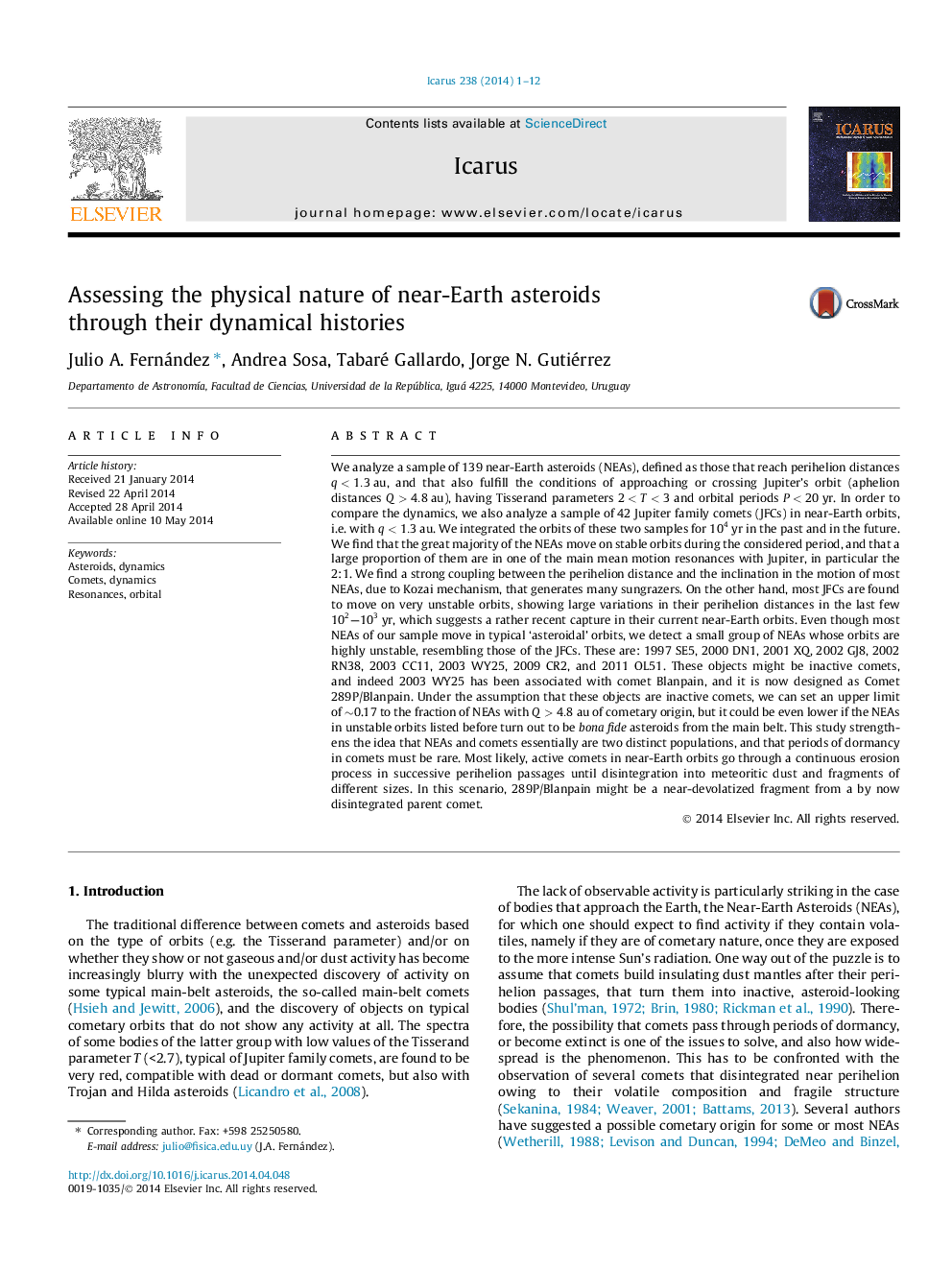| Article ID | Journal | Published Year | Pages | File Type |
|---|---|---|---|---|
| 1773117 | Icarus | 2014 | 12 Pages |
•Most NEAs with Q > 4.8 au are found to move on highly stable “asteroidal” orbits.•Most of these NEAs are found in MMR with Jupiter, in particular the 2:1.•The Kozai mechanism is responsible for driving many of these NEAs toward the Sun.•Yet a small fraction of them move on highly unstable “cometary” orbits (NEACOs).•If NEACOs are of comet origin, the fraction is only ∼0.14 among NEAs with Q > 4.8 au.
We analyze a sample of 139 near-Earth asteroids (NEAs), defined as those that reach perihelion distances q<1.3au, and that also fulfill the conditions of approaching or crossing Jupiter’s orbit (aphelion distances Q>4.8au), having Tisserand parameters 2
